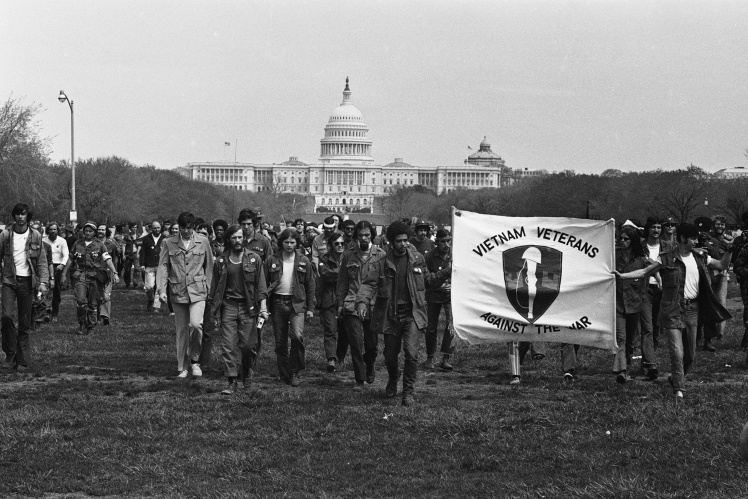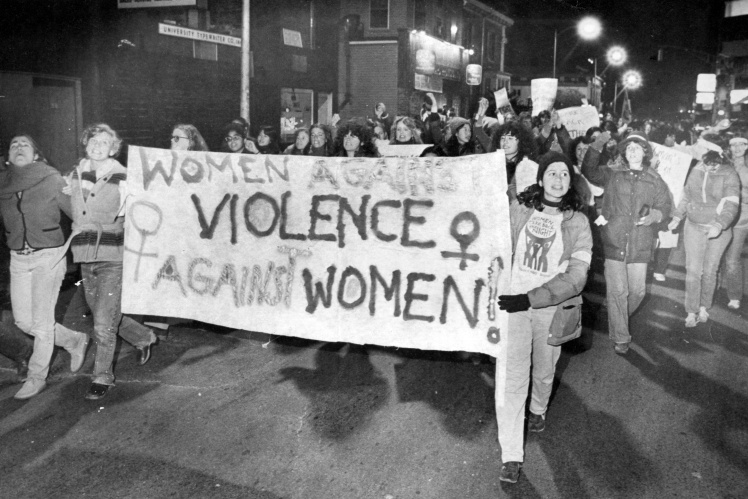The researchers found the first descriptions of post-traumatic stress disorders in soldiers in the written sources of ancient Assyria, which date back to 1300-600 BC. Assyrian soldiers, who had been fighting continuously for three years, would then see ghosts and “talk” to the men they had killed in battle. Scientists talk about the similarity of these symptoms with those observed in modern soldiers who participated in hand-to-hand combat.
Battle scene of Assyrian soldiers, engraved on a bronze plate, 9th century BC.
Getty Images / «Babel'»
Descriptions of psychosomatic disorders were also found in ancient sources. For example, the ancient Greek historian Herodotus told how one of the participants in the Battle of Marathon suddenly lost his sight after the death of one of his comrades, although he himself did not receive any injuries. Homerʼs ancient works Iliad and, especially, Odyssey also described soldiers traumatized by war. The Adventures of Odysseus is essentially the story of a veteran returning home after a long war. And his wife metaphorically “didnʼt recognize” him, because he returned a different person.
Frederick Goodallʼs painting The Return of Odysseus, 1869.
artgallery.nsw.gov.au / «Бабель»
Also, researchers suggest that the actions of the legendary Scandinavian Viking berserkers, who frantically destroyed everything in their path, are related to the hyperarousal characteristic of post-traumatic stress disorder.
Later, evidence of post-traumatic stress disorders related to combat experience was found in documents about the Hundred Yearsʼ War between England and France. The British playwright William Shakespeare later mentioned these events in his works. In his play Henry IV, there are no longer metaphorical, but concrete descriptions of the symptoms of PTSD. The wife of one of the heroes, Henry Percy nicknamed Hotsper, complained that after returning from the war, the man spent all his time alone, lost normal sleep and appetite, and sometimes suddenly shivered and sweated, remembering past battles.
Painting by Charles-Philippe Lariviere The Battle of Castillon, 1838. This is the last battle of the Hundred Yearsʼ War, which took place on July 17, 1453 and ended with the defeat of the English army.
Getty Images / «Babel'»
The first attempts at a scientific description of the stresses associated with war appeared in the 18th century. In 1761, Austrian physician Joseph Leopold described symptoms similar to PTSD in soldiers. He diagnosed it as “nostalgia,” as soldiers said they had trouble sleeping and anxiety because of homesickness.
In the 19th century, other names appeared for diagnoses related to combat stress. The terms “battle exhaustion” and “soldierʼs fatigue” described the stresses of long battles with daily fire. In 1871, the American surgeon Jacob Mendez da Costa described psychosomatic disorders during the American Civil War, which he called “soldierʼs heart”. The doctor noted that soldiers who had no physical heart problems developed symptoms similar to heart disease: fatigue and weakness even with mild exertion, shortness of breath, rapid heartbeat, sweating, and chest pain.
American soldiers after a battle during the American Civil War, 1860s.
Getty Images / «Babel'»
Scientists began to investigate the symptoms of PTSD, which occurred not only during war. In the 19th century, railway accidents were quite common. Railway administrations were increasingly approached by people who claimed to have been injured in a train accident but had no obvious evidence of injury. The railway rejected such statements as fake. However, researchers drew attention to them. In 1882, the British surgeon John Eric Eriksen in his work described the post-traumatic symptoms of passengers who were involved in railway accidents. Eriksen called this diagnosis “railway spine”, because he believed that it was physical injuries to the back or head that caused “nervous shock”.
Railroad accident in the American state of Virginia, September 27, 1903.
Wikimedia / «Бабель»
This caused a debate, because Eriksenʼs opponents believed that similar symptoms could be present in the witnesses of the accident. For example, the French physician Jean-Martin Charcot, who coined the terms “traumatic neurosis” and “traumatic hysteria,” believed that any traumatic experience could lead to “hysterical attacks” even years after the trauma.
Austrian psychologist Sigmund Freud was one of the first to move from theory to practice, i.e., to the treatment of PTSD. It was he who introduced the method of “talk therapy” — a long series of psychoanalytic sessions, during which the patient lay on a couch and talked about everything that popped into his mind.
Sigmund Freud in a study next to a patient couch, 1932.
Getty Images / «Babel'»
However, in the traditionalist society of that time, any mental disorders were perceived as a deficiency, weakness, or even a character flaw. This was especially true of soldiers. Public opinion was roughly this: a normal soldier should glorify war and show no signs of emotion. Those who developed PTSD were considered inferior at best, cowards and traitors at worst. And a similar attitude existed until the second half of the 20th century. So war veterans preferred not to tell anyone about their psychological problems, even close relatives.
But the problem did not disappear, on the contrary, it worsened. The First World War brought new warfare tactics, such as trench warfare, new weapons and equipment: flamethrowers, poison gas, heavy guns, tanks, and airplanes. Even just sitting for months in the trenches under constant fire was a new traumatic combat experience. Therefore, more and more attention was paid to it in Canada, the USA and many European countries.
Scottish infantrymen of the British Army in the trenches of the First World War (colorized photo), 1914.
Getty Images / «Babel'»
During the First World War, many soldiers lost their hearing, speech or became paralyzed without any damage. Because of this, some scientists have suggested that artillery fire causes neurotic illness. In 1915, the British psychiatrist Charles Myers introduced the term “shell shock”. Now it can be compared to a concussion. However, Myers considered “shell shock” to be an exclusively psychological injury and diagnosed it even in those soldiers who had never come under fire.
An Australian army dressing station near Ypres, 1917. The wounded soldier in the lower left corner has symptoms of “shell shock”.
Wikimedia / «Бабель»
Such a disorder was treated at best with "Freudian conversations." At worst, they diagnosed a "disorder of will", which was "treated" with humiliation, threats and disciplinary punishments. And in the most severe cases, a radical method of electric current treatment was used.
Electrotherapy of an American soldier with a psychoneurotic disorder during the First World War.
Wikimedia / «Бабель»
There was little point in such treatment. And in 1941, Freudʼs student, the American psychologist Abram Cardiner wrote in his work Traumatic neuroses of war that many veterans of the First World War behave as if they were still in a traumatic situation. Subsequently, his work became the basis for the description of modern PTSD criteria.
And at that time, an even more deadly World War II was raging. Only in the US army, the frequency of stress disorders was three times higher than during the First World War. Because of this, more than half a million soldiers left the army. New terms have come into use. For example, the “thousand-yard stare” is the blank, unfocused gaze of a traumatized soldier. In addition to descriptions of stress disorders of direct participants in hostilities, scientists began to pay attention to war-traumatized civilians who survived bombing, occupation, concentration camps, torture, etc. In the 1950s, traumatic disorders were divided into those caused by hostilities and “civilian catastrophes,” i.e., accidents, fires, and natural disasters.
US Marine Theodore James Miller with a “thousand-yard gaze” after two days of continuous combat on an atoll in the Pacific Ocean, February 1944.
Wikimedia / «Бабель»
But this didnʼt apply to the USSR. The problems of combat mental trauma were almost not investigated here. Any stress disorder in soldiers without physical injury was called “military hysteria” and was equated with desertion until the collapse of the Soviet Union.
As for treatment, it has finally become more humane in Western Europe and America. Among the know-how was “group therapy” for soldiers. However, at the beginning of its implementation, when hostilities were still going on, not everything went smoothly. Soldiers with “wartime neuroses” were sent back to the front within a week, believing that they would be better off in the circle of comrades-in-arms. Such “group therapy” started already after the end of the war. But the veterans of the Second World War wanted to share their experiences with few people, except for their comrades in arms. In science, the term “adaptation reaction” appeared, which predicted that the mental state of veterans should improve “after some time.” If it only got worse, then this disorder was no longer associated with war stress.
The turning point came during the Vietnam War of 1959-1975. At that time, the losses of the US army from psychological stress reached 30% of personnel. Veterans of the Vietnam War also gathered in groups where they discussed the difficulties of returning to civilian life and their psychological problems.
Vietnam War veteran Frederick Downs recounts the battle in which he was wounded for the fifth time, losing his left arm, on April 3, 1970.
Getty Images / «Babel'»
By the mid-1970s, hundreds of such groups existed in the United States. They became increasingly politically active and increasingly vocal about the need to protect the rights of Vietnam veterans. At the same time, the movement of feminists was gaining momentum, trying to draw attention to the problem of rape of women, child abuse, and domestic violence.
Vietnam veterans' anti-war march outside the Capitol building in Washington, May 1971. March against violence against women in Cambridge, 8 November 1970.
Getty Images / «Babel'»
A turning point was the study of psychologist Ann Burgess and sociologist Lynda Holmstrom in 1974. They coined the term “rape trauma syndrome” and compared the symptoms of rape victims to what soldiers experienced after the war. All this, together with the general anti-war mood in society, led to the fact that in 1980, the American Psychiatric Association for the first time singled out “post-traumatic stress disorder” as a separate official diagnosis and compiled a detailed description of its symptoms.
This influenced the further research of PTSD around the world and the development of treatment methods for both its physical and mental manifestations. Over the past several decades, these techniques have been developed and improved, new generations of drugs have been created, and new approaches to therapy have been developed.
Virtual reality therapy for US soldiers with PTSD June 9, 2011.
Wikimedia / «Бабель»
Translated from Ukrainian by Anton Semyzhenko.
We hope that the new PTSD treatment methods will help Ukrainians, in particular Babel journalists. In the meantime, itʼs your donations that help us. Support Babel: 🔸 in hryvnia 🔸 in cryptocurrency 🔸 via Patreon 🔸 or PayPal: [email protected].



